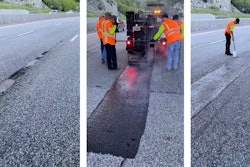The recent coronavirus (COVID-19) outbreak has certainly taught us the importance of preparing for the unexpected. Professionals across industries must proactively plan to reduce disease exposure – whether the common cold or something more serious – to effectively protect workers and customers alike. Do you have a policy in place to help reduce the spread of disease? If not, the Pavement Coatings Technology Council (PCTC) can help contractors adopt best practices to prioritize their own health and the health of their communities with the following recommendations.
Prioritize Employee Well-Being
According to the Occupational Safety and Health Administration (OSHA), clear communication promotes confidence in an employer’s ability to protect workers. Instill this confidence by crafting wellness policies that allow your people to take care of themselves and urging employees to use these benefits when needed. If your operating model allows, start by offering sick days and encouraging employees not to come to work if sick. With the important exception of traveling to and from job sites, sealcoat crews have the advantage of working outdoors and are unlikely to be exposed to the general public. During times of “social distancing,” consider establishing options for self-transport and, for office staff, working remotely. This creates a sense of safety by giving flexibility to those who need to take care of themselves or family members. Even for shift- or part-time-workers, reminding them that missed time can be made up through extra hours later on can go a long way toward keeping them from trying to push through while under the weather or still contagious.
Provide Access to Credible Resources
Let employees know how to reduce risk of infection and promote wellness. As part of your protection policy, be sure to outline resources that address how workers can shield themselves and others from contagious disease. A directory can point employees to the necessary guidelines from credible organizations, like the Centers for Disease Control (CDC) and OSHA, during times of uncertainty. These official sources of information remind us to follow protocols including social distancing, hand washing and surface sanitation to keep each other out of harm’s way. As an added measure, make it a standard practice to stock work trucks with tissues, disinfectant wipes, gloves, face shields, hand sanitizers and other essentials recommended by these health organizations. Remember to use the wipes to sanitize tools and sealcoating equipment between use, as well as any personal equipment that may come in contact with clients – including pens, clipboards or tablets used to obtain customer signature at the end of a project.
Seek Honest Feedback
Gaining buy-in from workers can make your plan even more successful, encouraging them to make healthy choices. Consider hosting an internal roundtable that allows your employees to share feedback, ideas and experiences, then adapt your policy to effectively address employee needs. Use this time to ensure workers understand expectations for complying with wellness policies and to outline how you intend to enforce the plan. Professionals who convey just how seriously they take precautionary measures will have greater success in running safe, healthy and thriving businesses that employees and clients can trust.











![Lee Boy Facility 2025 17 Use[16]](https://img.forconstructionpros.com/mindful/acbm/workspaces/default/uploads/2025/09/leeboy-facility-2025-17-use16.AbONDzEzbV.jpg?ar=16%3A9&auto=format%2Ccompress&fit=crop&h=135&q=70&w=240)








